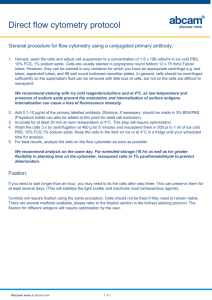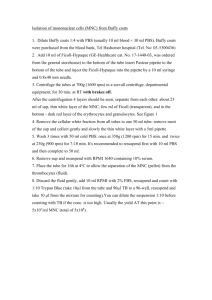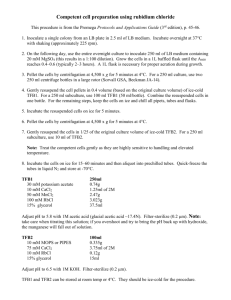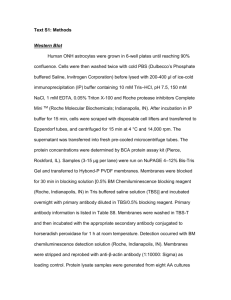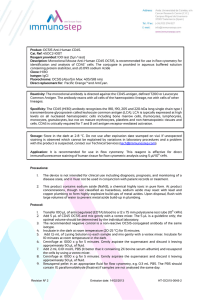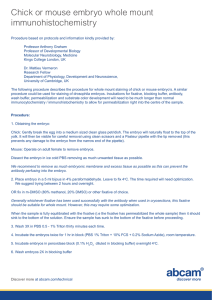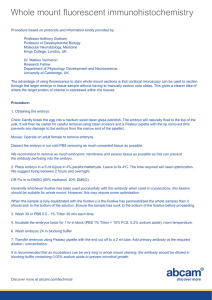Indirect flow cytometry (FACS) protocol conjugated secondary antibody.
advertisement
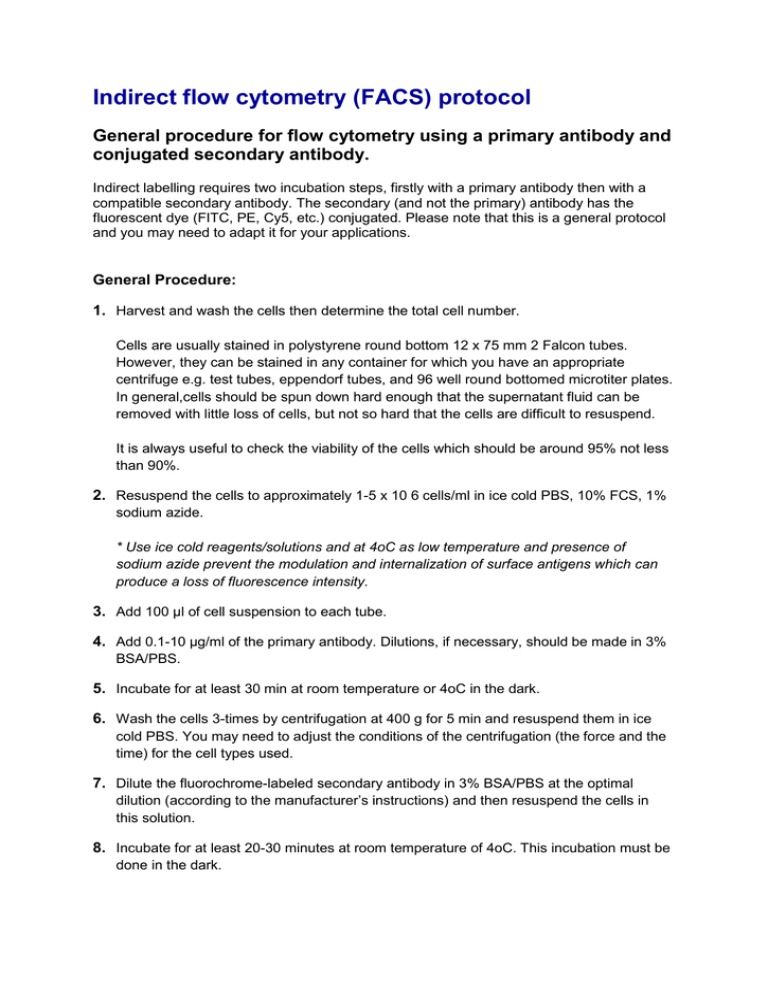
Indirect flow cytometry (FACS) protocol General procedure for flow cytometry using a primary antibody and conjugated secondary antibody. Indirect labelling requires two incubation steps, firstly with a primary antibody then with a compatible secondary antibody. The secondary (and not the primary) antibody has the fluorescent dye (FITC, PE, Cy5, etc.) conjugated. Please note that this is a general protocol and you may need to adapt it for your applications. General Procedure: 1. Harvest and wash the cells then determine the total cell number. Cells are usually stained in polystyrene round bottom 12 x 75 mm 2 Falcon tubes. However, they can be stained in any container for which you have an appropriate centrifuge e.g. test tubes, eppendorf tubes, and 96 well round bottomed microtiter plates. In general,cells should be spun down hard enough that the supernatant fluid can be removed with little loss of cells, but not so hard that the cells are difficult to resuspend. It is always useful to check the viability of the cells which should be around 95% not less than 90%. 2. Resuspend the cells to approximately 1-5 x 10 6 cells/ml in ice cold PBS, 10% FCS, 1% sodium azide. * Use ice cold reagents/solutions and at 4oC as low temperature and presence of sodium azide prevent the modulation and internalization of surface antigens which can produce a loss of fluorescence intensity. 3. Add 100 μl of cell suspension to each tube. 4. Add 0.1-10 μg/ml of the primary antibody. Dilutions, if necessary, should be made in 3% BSA/PBS. 5. Incubate for at least 30 min at room temperature or 4oC in the dark. 6. Wash the cells 3-times by centrifugation at 400 g for 5 min and resuspend them in ice cold PBS. You may need to adjust the conditions of the centrifugation (the force and the time) for the cell types used. 7. Dilute the fluorochrome-labeled secondary antibody in 3% BSA/PBS at the optimal dilution (according to the manufacturer’s instructions) and then resuspend the cells in this solution. 8. Incubate for at least 20-30 minutes at room temperature of 4oC. This incubation must be done in the dark. 9. Wash the cells 3 X by centrifugation at 400 g for 5 min and resuspend them in ice cold PBS, 3% BSA, 1% sodium azide. 10. Store the cell suspension immediately at 4°C in the dark. 11. Analysis: For best results, analyze the cells on the flow cytometer as soon as possible. We recommend analysis on the same day. For extended storage (16 hr) as well as for greater flexibility in planning time on the cytometer, resuspend cells in 1% paraformaldehyde to prevent deterioration. FIXATION: If you need to wait longer than 1 hour before analysis, you may need to fix the cells after step 5. This can preserve them for several days (this will stabilize the light scatter and inactivate most biohazardous agents). Controls will required fixation using the same procedure. Cells should not be fixed if they need to remain viable. There are several methods available. The fixation for different antigens will require optimization by the user. 1. Paraformaldehyde 0.01% to 1% for 10-15 minutes only, 100 µl per sample. 2. Acetone or methanol: N/B polystyrene/plastic tubes are not suitable for use with acetone Add 1ml ice cold acetone to each sample. Mix gently. Place at -20oC for 5-10 minutes. Centrifuge, wash twice in PBS 1% BSA. * Do not add sodium azide to buffers if you are concerned with recovering cell function e.g. if cells are to be collected for functional assays. It inhibits metabolic activity. For more information visit http://www.abcam.com/protocols
